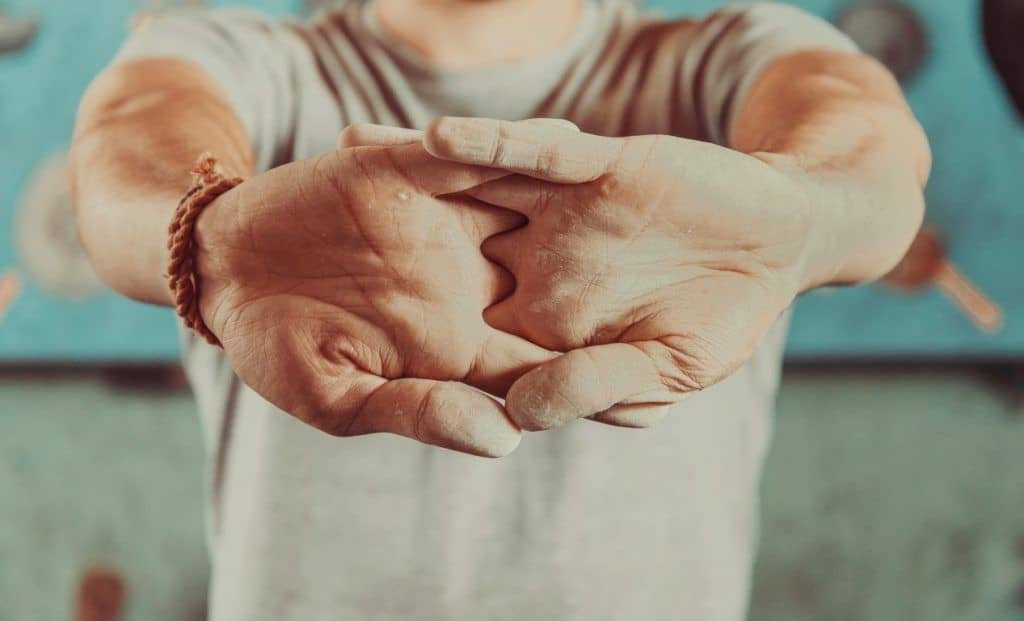More and more people are becoming interested in keeping themselves active and fit. Most people would focus on muscle building and working on their abs and pecs.
Rock climbers are a different breed, prioritizing a highly specialized area to be successful in an activity that also happens to contributes to overall health – grip.
Grip strength is an indicator of muscular endurance and strength.
But how do you build and increase your grip strength for climbing or bouldering?
Defining Grip Strength and Hand Grips
Grip strength is the force applied by the hand to pull on or suspend oneself from objects. It is a specific component of hand strength that indicates how strong your hand muscles are as a whole.
There are actually three kinds of grips: crush, pinch and support. Each grip requires different levels of grip strength and positioning.
Crush grip – The most common grip. It is the handshake-grip where the object rests on the palm and all the fingers. It is useful in crushing objects with pressure, such as beer cans.
Pinch grip – In pinch grips, the fingers are on one side of the object while the thumb is on the opposite side. The object is not on the palm but clutched by the fingers. This makes it a weak grip. Muscle cramping is one of the problems that come with pinch grips. It is also categorized as individual fingers + thumb grip.
Support grip – Support grips involve holding something for a long period of time. This involves muscular endurance to successfully pull off.
Grip Strengthening Exercises
There are several grip-strengthening exercises that you can do with minimal equipment needed. Here are some tips on how to increase grip strength for rock climbing.
Putty Exercises – Flexible putty should be incorporated as part of your resistance training regimen. Squeezing and molding pliable putty forces the smaller finger muscles to work. This increases muscular endurance. It also helps to mimic the different holds you encounter when climbing.
- Warming up –Knead and shape the putty with both hands. Press in and push out. Use individual fingers. Squeeze with varying degrees of force.
- Ball explosions – Form a ball with your putty. Push your fingers into it. Open the ball using bent and straight fingers to strengthen the extensors and abductors.
- Roll Squashes – Form a long torpedo shape with your putty. Pinch it flat between the thumb and the individual fingers. Repeat while taking note which digits tire easily.
- Can Opener Twists – Roll the putty into a log. Twist the top off by moving 15 times to the left and then 15 times to the right. Switch hands and repeat the process. Increase the intensity by using denser putty for greater resistance.
- Web Squeezes – Roll the putty into a long tube and hold hanging straight down. Squeeze the putty with the webbing of your fingers (the skin between your fingers, by the finger bases) going down the line. Reshape the tube and repeat with the other fingers.
- Crimp Pinches – Make a bigger torpedo and place it across your finger’s last crease near the tip with your palm up. Roll the putty to squeeze the tube against the base of your fingers. Repeat about 15 times before switching hands. You may also use both hands to do this.
Hold Endurance Exercises – Use a comfortable weight such as a gallon of water or a light dumbbell. Grip the item with just the fingertips and walk about 100 feet (or longer, depends on your preference). Or stay in place and hold for 20 to 30 seconds. Increase weights when it becomes too easy.
Squeeze ball Exercises – Use different squeeze ball sizes to strengthen your grip. Hold the ball in your hand and squeeze it hard for five seconds and release it. Repeat 10-15 times. Increase the length of time periodically or vary the size of the squeeze ball.
Hangboard Exercises – Any ledge or overhang can suffice for a hangboard. Hang on the ledge using a firm grip for 10 seconds, followed by a five-second rest. Repeat five times and change the hold used for another five-repetition set.
Conclusion
I hope that now you have a better understanding of grip strength and what exercises you can use to increase it for a better and safer climbing experience. So don’t waste time and go practice!

